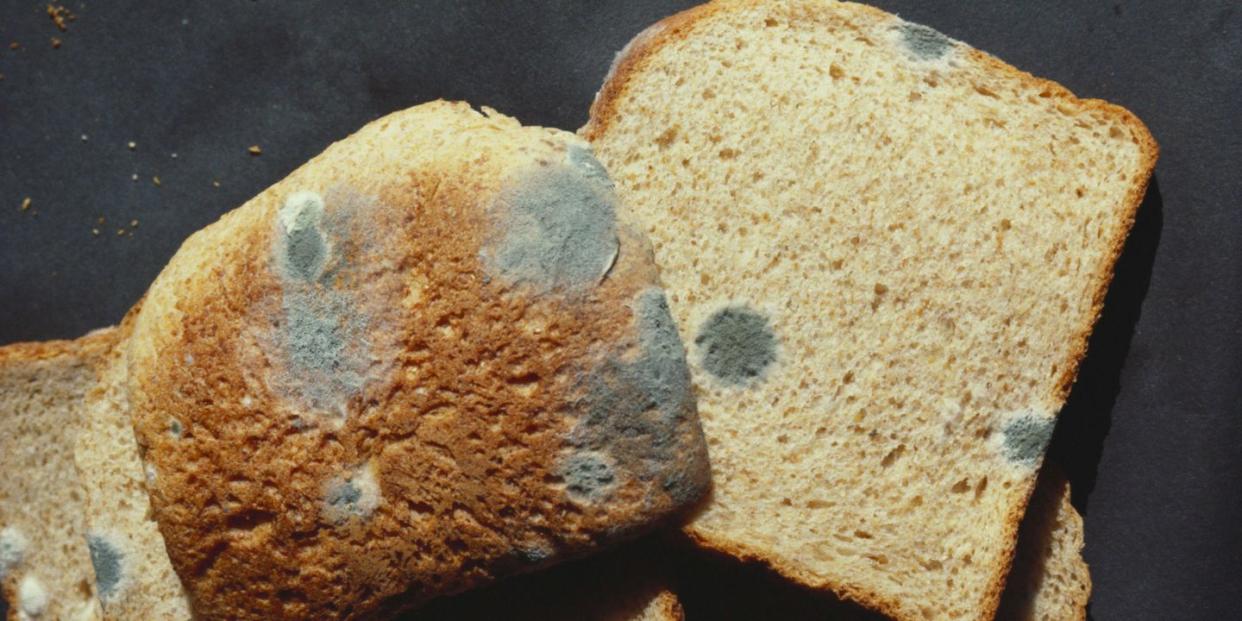The Scary Truth About Cutting Mold Off Of Your Bread

We've all been there. You're about to cut into a loaf of bread, and there it is. A fuzzy blue spot of mold lurking on the surface of that baguette you just bought yesterday. While most of us were taught to just cut around the mold and eat the rest in order to not waste food, it's time to stop that bad habit.
Why You Shouldn't Pick Mold Off Bread And Eat The Rest
"We don't recommend cutting mold off of bread, because it's a soft food," Marianne Gravely, a senior technical information specialist for the United States Department of Agriculture told NPR. "With soft food, it's very easy for the roots [of the mold], or the tentacles, or whatever creepy word you want to use, to penetrate [deeper into the food]."
Basically, the mold spore's roots go much farther into bread than our eyes can see.
Gross, right?
There might be some wiggle room when it comes to sliced bread that comes in a bag, according to Gravely. If you can tell that one end of a long loaf is clean on the inside and exterior, it's safe to keep. But if you're not sure, just toss it out.
"I have seen mold spread from one slice to the next," Gravely told NPR. "I'm sure some people would really want to press the situation, but bread is cheap. Go buy some more."
What About Other Moldy Foods?
Bread isn't the only food that you can't just cut off the moldy bits and eat the rest. Jam, soft fruits, and lunch meat also should be thrown away once mold is spotted on any part of it.
There is some good news, though. Harder foods like salami, carrots, and hard cheeses can be salvaged by cutting off the visible mold since its roots can't move as quickly through their tough surfaces. Just to be safe, Gravely recommends cutting off an additional inch of food around the mold.
What Should You Do If Eat Mold By Accident?
“You’re not going to die from eating mold,” said Rudolph Bedford, MD, a gastroenterologist at Providence Saint John’s Health Center in Santa Monica, while speaking with Women's Health. It likely won't cause you too much harm, especially if your immune system isn't compromised.
If you do feel sick after eating moldy food, it's probably because the mold has a bad taste, and not because it's highly toxic. However, there is an especially harmful type of mold out there called mycotoxins. Georgia Jones, PhD, a food science professor at the University of Nebraska-Lincoln, told Women's Health that "minute amounts are unlikely to make someone sick, but these can accumulate in the liver and kidneys and cause health problems in the long term."
Basically, the experts say that in most cases you'd have to eat large quantities of mold to get very sick. In the unlikely event you do get really sick beyond mild nausea and you experience persistent vomiting, you should see a doctor.
You Might Also Like


